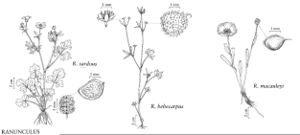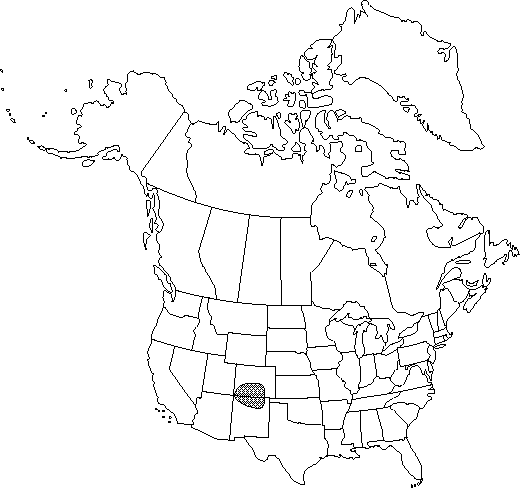Difference between revisions of "Ranunculus macauleyi"
Proc. Amer. Acad. Arts 15: 45. 1879.
FNA>Volume Importer |
imported>Volume Importer |
||
| Line 53: | Line 53: | ||
|publication year=1879 | |publication year=1879 | ||
|special status=Endemic;Illustrated | |special status=Endemic;Illustrated | ||
| − | |source xml=https:// | + | |source xml=https://bibilujan@bitbucket.org/aafc-mbb/fna-data-curation.git/src/bb6b7e3a7de7d3b7888a1ad48c7fd8f5c722d8d6/coarse_grained_fna_xml/V3/V3_521.xml |
|genus=Ranunculus | |genus=Ranunculus | ||
|subgenus=Ranunculus subg. Ranunculus | |subgenus=Ranunculus subg. Ranunculus | ||
Revision as of 00:02, 28 May 2020
Stems erect from short caudices, 6-15 cm, glabrous or sometimes pilose, each with 1-2 flowers. Roots slender, 0.7-1.3 mm thick. Basal leaves persistent, blades narrowly elliptic to lanceolate or oblanceolate, undivided, 1.5-4.5 × 0.5-1.1(-2.8) cm, base acute or long-attenuate, margins entire except for apex, apex truncate or rounded and 3(-5)-toothed. Flowers: pedicels glabrous or brown-pilose; receptacle glabrous; sepals 6-12 × 2.5-8 mm, abaxially densely brown-pilose; petals 5(-8), 10-19 × 6-17 mm; nectary scale glabrous. Heads of achenes ovoid or cylindric, 5-10 × 4-5.5 mm; achenes 1.5-1.7 × 1.2-1.3 mm, glabrous; beak slender, straight or recurved, 0.5-1.5(-2.2) mm.
Phenology: Flowering late spring–summer (Jun–Aug).
Habitat: Sunny open soil of alpine meadows and slopes
Elevation: 3300-3700 m
Discussion
The type specimen of Ranunculus macauleyi var. brandegeei L. D. Benson, from the Sangre de Cristo Mountains, Colorado, differs from typical R. macauleyi in its tall stem, broad, crenate-laciniate leaves, and sepals with pale or transparent hairs. These characteristics are suggestive of R. inamoenus, and the plant may be of hybrid ancestry.
Selected References
None.

